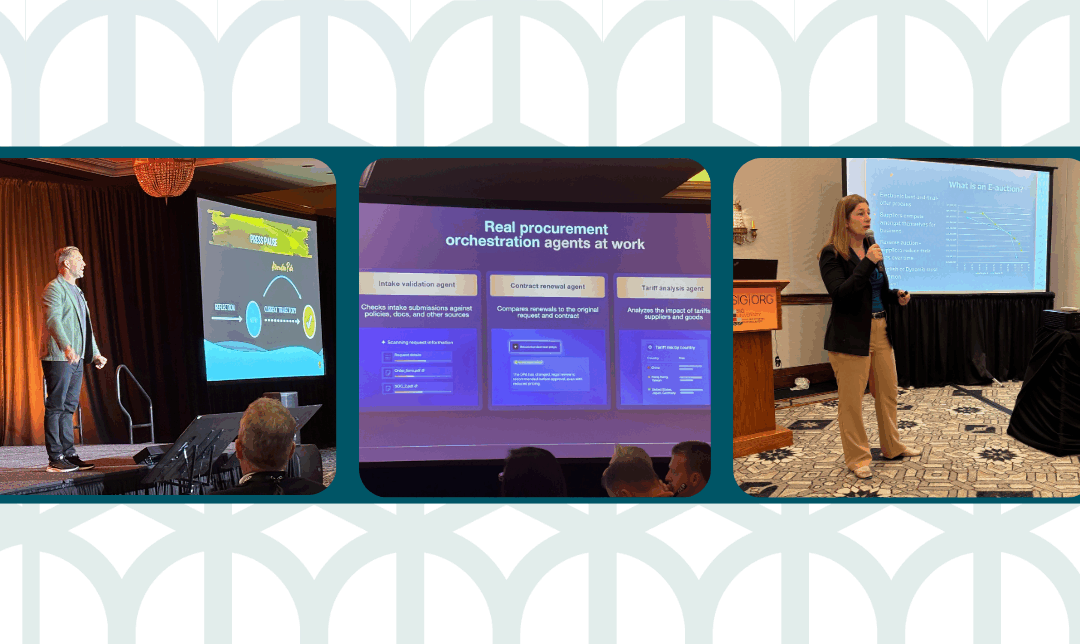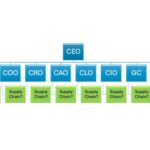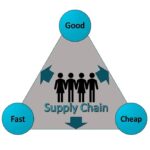There are multiple reasons to attend conferences: networking, being visible in your professional community, and especially learning new things. If you’re like me previously in my career and can’t attend conferences for various reasons, I can bring back at least a small piece of the learning part of the conference to you. The SIG|ORG Fall Summit was the last of the main “conference season” for me this fall and was an interesting conference with a different feel from ISM World or ProcureCon Indirect. In today’s article let’s talk about the keynote on achieving your goals, the first day’s lunch session on agentic AI, and the session right before mine on determining your procurement personality.
Keynote – Elevated Leadership: The Future of High Performing Teams with Seb Terry
Today’s theme is: “What this session should have been called.” This session should have been called “Achieving your bucket list” or something similar. This was an excellent keynote, and was not given by a procurement professional. Instead it was by Seb Terry, whose claim to fame is creating a bucket list of 100 things to accomplish and then posting his efforts on social media. His talk was very much about setting and achieving your goals, and he was a very engaging speaker. His overarching steps to achieving any goal were:
- Identify the goal – clearly, crisply, and exactly
- Tell someone about your goal – this creates accountability
- Take the first bold step – Do the first major thing to actually achieve your goal. Get started.
None of this is earth-shattering and I think we’ve all heard it before. I will say his “first bold step” was often things like getting on a plane, so it was a major step.
Seb encouraged the audience to cast their mind back to the last time we accomplished something that mattered to us and think about how it made us feel. He encouraged the audience to press pause and think on that feeling and reflect on how we got to our current point, how we’ve shown up so far through good times and bad, and then ask ourselves what’s on our list. I confess to struggling with this one right now as my goals are a bit unclear. It’s one of the reasons I work with a career coach, who I highly recommend.
Mr. Terry quoted three statistics: 38% of employees feel underappreciated, 77% would work harder with due recognition, and employees who feel valued are 4.6 times more likely to perform at their best (no source given). Then he had us turn to our neighbor and ask three questions:
- What’s on your list? Share your goal. This ties to “I see you” as one person to another.
- What are you finding hard so far? Share your truth. This ties to “I hear you” as we need to be heard.
- Where do you need support? Share the load (accountability). This ties to “I’m with you” and human connection.
I liked these three questions a lot and found them more useful than the first three objectives. When talking about goals with others, with our teams, or with our family, these three questions structure the conversation and help others accomplish their goals. Note that “where do you need support?” is different from “where can I support you?”. It’s possible your support is not what they need, but it’s still important they identify what support looks like. And perhaps you can help them connect to the right support, but maybe they need to do it on their own or find someone else to help.
Mr. Terry noted that no goal is ever just ourselves. We need other people to accomplish our goals. He also talked about purpose-driven goals, which we never really fail at. We don’t fail because we keep driving and trying until we achieve those purpose-driven goals. And those goals are only truly available to us when we care.
The end of the keynote was saying that Passion Inspires Passion – whether positive or negative. Everything we do inspires a ripple effect, but fueling that ripple with passion strengthens that ripple as we send it out into the world.
So what’s on your list? What are you finding hard so far? And where do you need support?
Lunch Session: The Path to Autonomous Procurement at Motional with Joe Fox from Zip and Patrick Eckhert from Motional
This session just after lunch on the first day was a “fireside chat” about how Motional had implemented automation and agentic AI (AI where the software serves in place of a person doing a task) using Zip. I don’t feel very charitable toward these AI sessions for a few reasons:
- Most “AI” is a fancy word for technology. While in this case there were some actual AI solutions where a computer is learning and making decisions based on complicated inputs, there were also a lot of programmed bots simply doing repetitive tasks, which is not AI. I tend to take a very strict definition of AI where the computer has to be thinking and adding something to the data that is already there in order to be AI, which only applies in the minority of cases.
- About halfway through the session, one of the speakers casually mentioned that Motional had a 40% reduction in force and implemented Zip to cover that gap. This is a chicken-egg problem and I’m unclear if the company decided to lay off 40% of its team knowing AI could “cover that gap” or if AI implementation triggered this layoff. The timing implied the layoff was first and then AI, but I think we’re seeing this kind of corporate board response to AI everywhere. And it’s not working as well as boards want it to. If I look at what’s happening with recruiting, we now have AI writing our resumes, submitting our job applications, and even composing our LinkedIn messages to recruiters. On the other side, AI is reviewing those resumes, conducting screening interviews, and responding to the LinkedIn messages. We have computers talking to computers and have completely lost what it means to hire talented people. I know this pendulum will swing back at some point, but right now it feels very like the 1999 movie The Matrix to me.
- These sessions tend to be extremely vague. I understand keeping company data confidential, but in my line of work I see the same processes (and same process problems) everywhere. Show the process. Show how many AI agents it took to replace that process and how you had to change the process to suit the AI approach. Talk to me about the change management you had to do to get where you are. I don’t want the shiny, glossy version. I want the reality so if I choose to go do this I am fully equipped to get it done.
The speakers cited a couple statistics I think are worth sharing here.
62% of companies use a blend of Enterprise Resource Planning (ERP such as SAP or Oracle), Source-to-pay (S2P such as Ariba, Synertrade or Coupa) and standalone solutions to manage procurement (source: Hackett Group).
92% of Chief Procurement Officers are actively planning and assessing AI capabilities (Source: Deloitte).
The best takeaway I had from this talk was some examples of AI agents:
Intake validation agent – Checks intake submissions against policies, documents, and other sources. This is basically the “what are you missing or what’s wrong?” agent. I love the potential for this one to help identify when stakeholders send incomplete scopes of work or otherwise send procurement requests to do things without the right stuff backing it up (for more on what I’m talking about here, check out my article “We Can’t Do the Things Without the Stuff!”). The caution I see here is that as a stakeholder I can see this rapidly getting very frustrating. If they forgot the contract number, totally fine, let’s just go add it. But if they don’t understand where to find what’s missing, can’t make it better without help, etc., then the AI agent simply can’t be a blocker to good customer service.
Contract renewal agent – Compares renewals to the original request and contract. This one is cute because it can definitely take some of the drudgery and frustration out of comparing two contracts (anyone else get confused by what’s new when comparing two Word documents? Also, the flags for formatting changes are very noisy!). The pitfall I see here, again, is this can rapidly turn into the death spiral of computers talking to computers. There are changes in company politics (and sometimes company leadership), direction, global forces, and all kinds of things that differ between contract renewal terms that simply can’t be done by computer. As long as this doesn’t turn into AI-talking-to-AI, I can see its value.
Tariff analysis agent – Analyzes the impact of tariffs on suppliers and goods. Other than this being 2025-conference-buzzword-city, I understand the appeal of this one too. Sorting through the chaos of tariffs and getting useful data out of your system on their impact can be extremely difficult. However, AI can only take the data it has and can’t “make things up” or even usually make educated guesses. So if your tariffs are hiding in price hikes and not called out as a separate surcharge, good luck getting this kind of data out of agentic AI. You also have to have a good supply chain map before you can determine your 2nd and 3rd tier supplier risk based on country of origin. If you’re considering this one, make sure you’ve done your homework first.
Better, Faster, Cheaper: What’s Your Procurement Personality with Erin McFarlane of Fairmarkit
I’m talking about this session last, but it’s actually the first workshop I went to. Ms. McFarlane was a good speaker and really knew her stuff. This workshop should have been titled something like “How to Spot a Company’s Iron Triangle Priorities.” The Iron Triangle is the classic “You can have something good, cheap, or fast – pick two” dilemma. (More on it in my article here.) In a later conversation with another attendee, she noted she’s heard it called the triple-constraint model. Ms. McFarlane often interchanged “good” and “low risk,” which is a common thing to do and makes sense here. We broke out into small groups and discussed characteristics of organizations focusing on each piece of the triangle:
Organizations focusing on risk: lots of contracts, cybersecurity, measuring spend under contract/management, clear quality control and project management processes; supply chain reports to the CEO or Chief Admin Officer or even Legal
Organizations focusing on cost: headcount rationalization, Lean, measuring savings/cost avoidance, tracking purchase price variation (PPV); supply chain reports to the CFO
Organizations focusing on speed: measures the speed of the process (procure-to-pay, sale-to-ship, etc.), emphasizes innovation and efficiency; supply chain reports to the COO
Then we talked about the opposite; characteristics of organizations losing focus on each piece of the triangle:
Organizations losing focus on risk: high lawsuits, decentralizing procurement, raising spend/contract thresholds, turnover, and letting the budget holders run procurement decisions
Organizations losing focus on cost: top heavy organization, lack of processes, and high margins (but not high profit)
Organizations losing focus on speed: increasing red tape/bureaucracy (and not good bureaucracy!), focus on compliance, poor customer satisfaction, and people avoiding procurement
I especially found the conversation about how companies moving away from a focus on risk tend to decentralize their procurement teams. I think that also moves away from a focus on cost because a centralized team almost always is better able to leverage their spend and reduce costs. I’ve definitely witnessed these shifts firsthand at previous employers.
The session wrapped up with reviewing job descriptions for key words indicating whether a company was hiring for risk, cost, or speed focus. Ms. McFarlane noted this has gotten harder as AI ends up writing more job descriptions, so it’s now more difficult to wade through the generic AI jargon to figure out the true organizational priority. Either way, it’s an exercise worth doing for the next position you’re looking at – see if you can spot that organization’s priority in the iron triangle.
Notes on the SIG|ORG Conference
I liked the SIG|ORG Fall Summit, in so many ways it was everything a conference should be. The venue in Scottsdale was lovely, and the conference organizers were knowledgeable and visible. The speed networking event (4 minute conversations with buy-side and sell-side procurement on opposite sides of the table) was really interesting and I met some fascinating people. Shout out to David Hock who in a previous lifetime ran an e-auction so successful that it actually repriced the entire market on TVs for corporate purchases!
Attendees to my own session were best at ProcureCon, followed by ISM World. The attendees at this conference were a little supplier-heavy, with many auction solution providers in attendance. We’re definitely all seeing a resurgence in interest in e-auctions as a negotiation tool, but the stigma and caution around auctions is still very strong.
If it fit in my schedule and made sense, I would go to SIG again, but if I’m scheduled to speak at the same time as the executive roundtable, I would change the structure of my workshop to speak to solution providers.
If you’d like to talk through your conference experience, let’s chat. If you’d like to get these articles weekly straight to your inbox and never miss one, sign up for my newsletter.
My book, Transform Procurement: The Value of E-auctions is now available in ebook, paperback and even hardcover format: https://www.amazon.com/dp/B0F79T6F25




